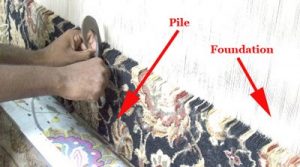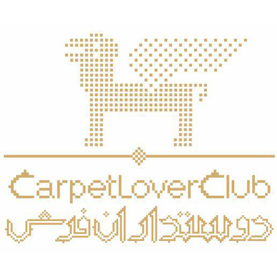About Oriental Rugs
By the strictest definition, Oriental rugs are carpets hand knotted only in Asia. Iran, China, India, Russia, Turkey, Pakistan, Tibet and Nepal are some of the biggest rug exporters. Persian rugs also are Oriental rugs but they are made only in Iran (formerly known as Persia). Characteristics of a Persian rug include an unusually thick pile (up to 160 knots per square inch), extremely rich color combinations and unique designs, and a very distinct knot. Persian carpets are traditionally known for their tremendous variety in design, color, size, and weave. Moreover, they are known for the uniqueness of each and every rug produced. Rugs are generally named after the village, town or district where they are woven or collected, or by the weaving tribe in the case of nomadic pieces.
How Persian Rugs Are Made
Persian and Oriental rugs whether made in tribal or city surrounding are all hand knotted, the weaver ties the material (whether it be wool or silk) around the warps of the foundation using one of several different knots. Each rug is made to a design, whether that design is copied from an intricate design plate or is inspired by the weaver, their surroundings and their way of life depends on the type of rug. After each row of knots is complete, individually tied using a variation of coloured wool to form patterns, a weft strand is tightly packed between the newly completed row and the one which is about to begin, keeping each knot firmly in place. One rug can take months or even years to complete, ensuring the owner gains a unique work of art which is not only beautiful but practical and often extremely durable. Various materials, tools and knots are used in the weaving of Persian & Oriental rugs, each explained in detail below as well as a description of the foundation and dyes used in handmade rugs.
Made of Natural Fibers
Starting from those utilitarian beginnings, the tribes saw no reason to switch over to synthetic fiber for weaving their rugs and that’s why you will find that authentic rugs are always constructed with natural fibers – wool, cotton and silk.
Foundation and Pile

The flat base is called the foundation of the rug and the pile is the fiber that is used in the weaving.In some types of rugs, the pile is left long and lush and in some varieties the pile is cropped really short so that the outlines of the designs can be more clearly visible. The foundation is usually made up of wool, cotton or silk and sometimes a combination of any two. Cotton, wool and silk fibers are also most commonly used in the pile. Sometimes, camel or goat hair is also used in making the pile. The foundation of a rug is its underlying structure. It is the foundation that the pile is knotted onto and is made up of the Warps and Wefts.
Warp
The warp is refers to the vertical strands running up and down a rug. These are vital to the rugs structure as the knots are tied to them. The wefts are also placed between them in order to keep the knots in place. The fringe of a rug is the tied loose ends of its warp.
Weft
The weft is used in order to keep the knots in place. Before and after each row of knots the weft strand is passed through the warp and combed and beaten down, this compacts the row of knots creating a tight structure.
Persian Rug Materials
Cotton is used for both warp and weft in most rugs, however, some tribal rugs use wool in their foundation and intricate silk rugs often use silk as a foundation as well as pile. Pile refers to the material or fibre used in weaving the rug. The main materials used in Persian rugs are wool, silk and cotton. Sometimes camel or goats wool is used by tribal weavers.
Cotton

Cotton Foundation
Most rug foundations are made of cotton. The cotton warp threads are strung between the horizontal beams, keeping the tension consistent throughout. The weaver first ties a knot around two warps adjacent to each other. Then the knot is then slid down to the base and the excess yarn is cut off. The thickness of the rug depends on the length of the yarn that is left behind.
Wool

Wool Foundation
Wool is the most commonly used material for the pile in hand woven tribal rugs. There are several reasons why wool has always been the material of choice for the weavers. For one thing it is the most easily available material and in addition, it is also cheap, durable, soft and easy to work with. The age, breed and diet of the animal are all deciding factors that determine the quality of the wool. You will find that there is a huge difference in the wool quality between the different types of rugs.
Silk

Silk Foundation
Silk is an expensive fiber and to the tribal weavers, it is prohibitively expensive. The best silk fiber is imported from the south shores of the Caspian Sea. The silk rugs that you see are all woven in the cities and they are usually only produced on order. Silk can be used by itself or in combination with wool. Rugs woven in silk are fine, elaborate and beautiful to touch and are usually used as decorative wall hangings instead of as floor coverings. Silk is most often used in high knot per square inch Tabriz Rugs and other high knot count Persian Rugs.





